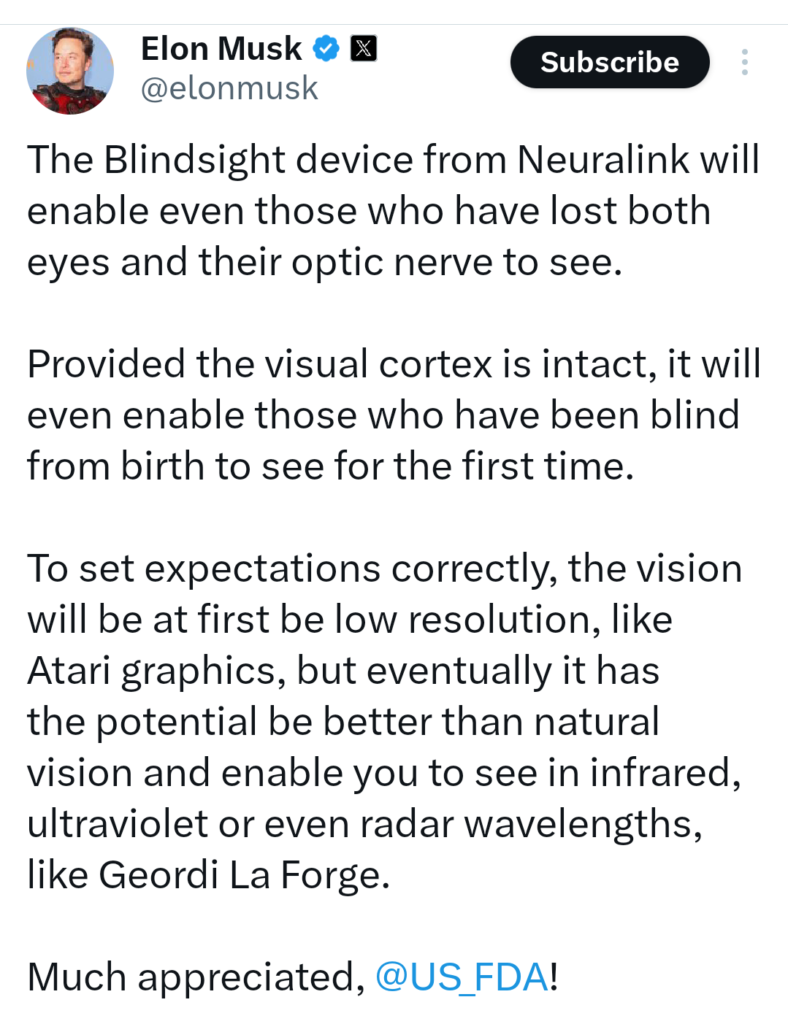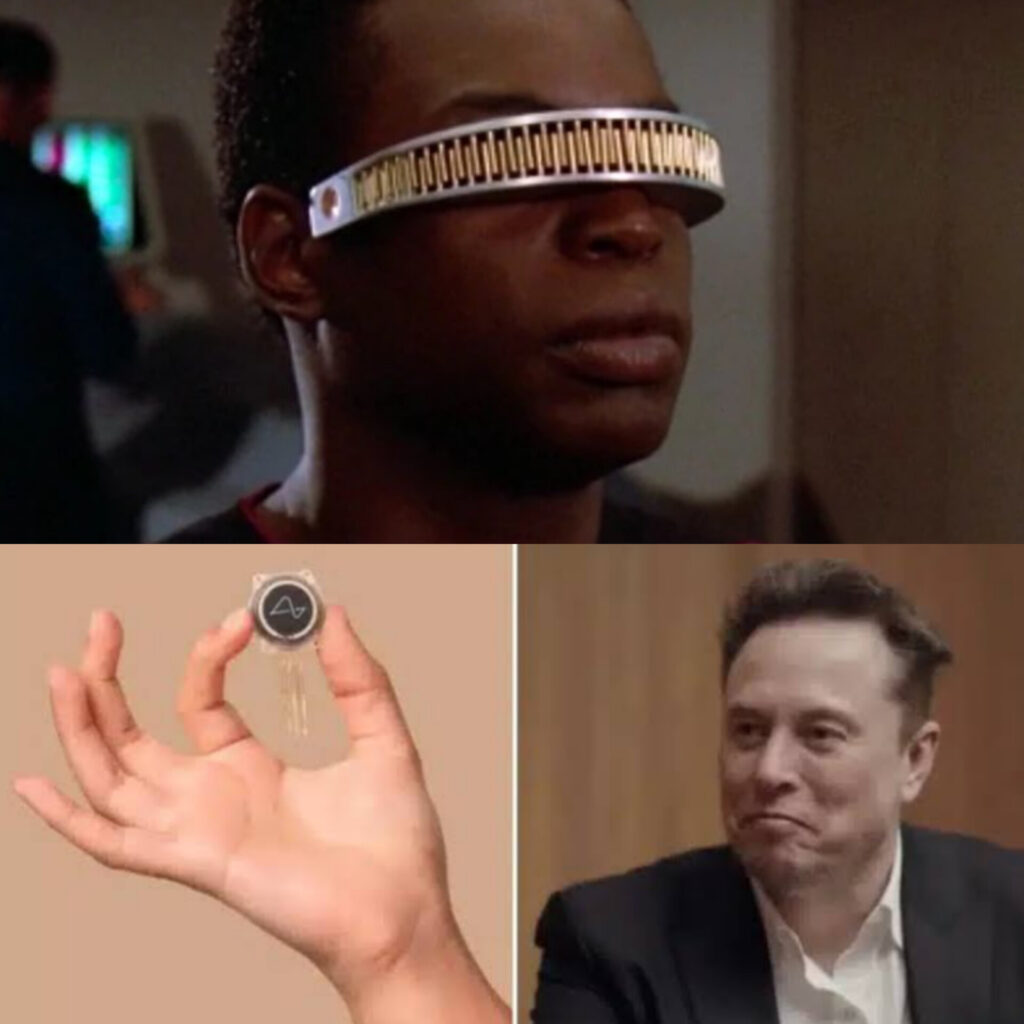On September 17, 2024, Neuralink, the brain-chip company founded by Elon Musk, achieved a remarkable milestone. The U.S. Food and Drug Administration (FDA) granted its experimental vision-restoring implant, known as ‘Blindsight,’ the prestigious “breakthrough device” designation. This designation is reserved for medical devices that could offer significant advancements in treating serious or life-threatening conditions, and it is intended to expedite their development and approval.
The Blindsight implant is Neuralink’s latest innovation aimed at restoring vision for individuals who are blind. This includes not only those who have lost their eyes or optic nerves but also individuals who were born blind. According to Musk, the device is designed to bypass damaged visual pathways and directly stimulate the brain’s visual cortex, which is the part of the brain responsible for processing visual information.
The technology behind Blindsight involves a brain implant that interfaces with the visual cortex. By sending electrical signals to this part of the brain, the device aims to create visual experiences for users. Musk explained that while the initial visual output might be similar to early video game graphics—low resolution and somewhat crude—future iterations of the technology could offer much clearer and more detailed vision. In addition, there is the potential to expand the spectrum of visible wavelengths to include infrared and ultraviolet light, offering a vision range that surpasses natural human capability.
The implications of Blindsight are profound. For people who have been blind from birth, this technology could provide a new way of experiencing the world. The ability to see, even in a rudimentary form at first, represents a significant step forward in medical technology. As the technology advances, it could provide enhanced visual capabilities, potentially transforming the lives of individuals who have never had the opportunity to see.
Neuralink was founded in 2016 with the goal of developing advanced brain-machine interfaces. Beyond vision restoration, the company is also working on other projects aimed at improving the quality of life for people with disabilities. One notable project involves an implant designed to help paralyzed patients control digital devices solely through their thoughts. This could significantly enhance communication and interaction for individuals with spinal cord injuries or other mobility impairments.
With the FDA’s breakthrough designation, Neuralink is poised to accelerate the development of the Blindsight implant and move into human trials. This milestone not only signifies a major advancement for Neuralink but also brings new hope to those who have long awaited a solution for vision restoration. The successful integration of this technology could revolutionize the field of neuroprosthetics and provide a new way of restoring sensory functions for people with severe impairments.
As Neuralink continues to push the boundaries of what is possible with brain-machine interfaces, the Blindsight implant represents a promising step toward making previously unimaginable medical breakthroughs a reality.








